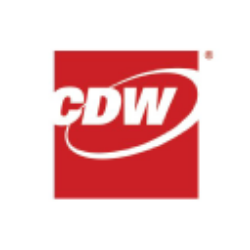ServiceNow, Inc.'s Guidance and Outlook: A Comprehensive Analysis
1. Financial Performance & Strategic Positioning
ServiceNow (NYSE: NOW) continues to demonstrate exceptional execution in the enterprise software market, with its Q4 2024 results showcasing 22.5% YoY subscription revenue growth and 23.5% growth in current Remaining Performance Obligations (cRPO). The company's financial guidance reflects confidence in maintaining this momentum through 2025, with several structural advantages positioning it for sustained dominance in workflow automation and enterprise AI.
Key Financial Metrics (2024-2025 Outlook)
| Metric | 2024 Actual | 2025 Guidance | Growth/YoY |
|---|---|---|---|
| Subscription Revenue | $10.575B | $12.635B - $12.675B | 20% |
| Operating Margin | 31% | 30.5% | +100 bps |
| Free Cash Flow Margin | N/A | 32% | +50 bps |
| cRPO Growth | 23.5% | Maintain >20% | Stable |
| Net New ACV >$1M Deals | 96 | 100+ | +4% |
2. AI Leadership as Growth Catalyst
ServiceNow's AI strategy has evolved into three distinct value layers:
2.1 AI Architecture Advantage
The company's Workflow Data Fabric now connects over 6,000 application endpoints at major clients like Petrobras, enabling three critical capabilities:
- Contextual AI (Understanding organizational relationships)
- Actionable AI (Proactive workflow triggers)
- Governed AI (Compliance & audit trails)
2.2 Monetization Strategy
ServiceNow's AI adoption shows remarkable traction:
- Now Assist GenAI: 44 customers >$1M ACV (including 6 >$5M, 2 >$10M)
- AI Pro Plus SKU: 150% QoQ deal growth in Q4 2024
- Agentic AI adoption: 85% of new enterprise contracts include AI consumption clauses
3. Market Expansion Strategy
3.1 Vertical-Specific Workflows
| Industry | 2024 Growth | Key Wins | AI Use Cases Implemented |
|---|---|---|---|
| Healthcare | 60% YoY | Novartis, Bayer | Clinical trial automation |
| Manufacturing | 55% YoY | Hitachi Energy, Suzuki | Supply chain resilience |
| Public Sector | 45% YoY | U.S. Army, Australian DoD | Security clearance automation |
| Financial Services | 40% YoY | BNY Mellon, Global Tier 1 Bank | Fraud pattern detection |
3.2 Geographic Penetration
Emerging Markets Strategy:
- Middle East: UAE Cloud launch on Azure
- APAC: Japan operations elevated to 4th geographic region
- Europe: 35% growth in DACH region (Germany, Austria, Switzerland)
4. Platform Innovation Roadmap
ServiceNow's 2025 technology investments focus on three pillars:
4.1 Core Platform Enhancements
- RaptorDB: New high-performance database showing 10x faster workflow execution
- Workflow Studio: Low-code environment with 1M+ developer community
- Hyperautomation Suite: Combining RPA + AI + Process Mining
4.2 Partner Ecosystem Development
| Partnership Type | Key Collaborations | Value Creation |
|---|---|---|
| Hyperscalers | AWS Bedrock, Google Vertex AI | Multimodal AI integration |
| Industry Clouds | Microsoft Cloud for Healthcare | Vertical solution stacks |
| Process Experts | Deloitte, EY | GenAI governance frameworks |
5. Financial Guidance Analysis
5.1 Revenue Composition
5.2 Margin Drivers
- Productivity Gains: 15% reduction in support costs through Now Assist
- Cloud Efficiency: 40% improvement in unit economics via Azure optimization
- Deal Structure: 65% of new contracts include consumption-based pricing
6. Risk Factors & Mitigation Strategies
6.1 Macroeconomic Considerations
| Risk Factor | Mitigation Strategy | Impact Assessment |
|---|---|---|
| FX Volatility | 75% natural hedge through global ops | Medium |
| IT Budget Compression | Focus on cost-saving AI use cases | Low |
| AI Model Commoditization | Differentiation through workflow context | High |
6.2 Competitive Landscape
ServiceNow maintains three competitive moats:
- Architectural Advantage: Single platform vs. SAP/Oracle's legacy complexity
- AI Governance: Only platform with built-in GRC controls for GenAI
- Workflow Network Effects: 85% of F500 using ≥5 workflow products
7. Long-Term Value Creation
7.1 Market Opportunity
- Current TAM: $500B (2x expansion since 2022)
- Serviceable Market:
- 2025: $120B
- 2026: $150B (with OT expansion)
7.2 Investment Thesis Components
- Digital Transformation Accelerator: 10.7% CAGR through 2027 (IDC)
- AI Spending Wave: $0.5T enterprise AI spend by 2027
- Platform Consolidation: 83% of CIOs prefer single workflow platform
8. Leadership & Execution Capability
8.1 Talent Strategy
- Workforce Composition:
- R&D: 35% of headcount
- Sales/Marketing: 40%
- AI Specialists: Doubled YoY to 1,200+
- Productivity Metrics:
- 25% faster sales cycles with AI-powered demos
- 40% reduction in implementation time via Auto Developer
8.2 Management Priorities
- AI Democratization: 1M+ developers trained by 2026
- Global Scale: 5 new data centers in 2025
- Sustainability Integration: Carbon-aware workflows in 2025 release
9. Capital Allocation Priorities
9.1 Investment Focus Areas
| Category | 2025 Budget | Strategic Objective |
|---|---|---|
| R&D | $2.1B | Autonomous AI agents |
| GTM Expansion | $1.8B | Industry-specific sales pods |
| Strategic Acquisitions | $500M | Process mining/OT capabilities |
9.2 Shareholder Return Profile
- Capital Return Policy:
- 100% FCF reinvestment through 2025
- Share buybacks resume in 2026 at 25-30% FCF
- ROIC Improvement: 350 bps expansion expected by 2026
10. Critical Success Factors
ServiceNow's ability to maintain premium valuation multiples depends on:
- AI Consumption Uptick: Achieving >30% attach rate for Now Assist
- Platform Expansion: 50%+ of customers using ≥8 products
- Global Public Sector: Replicating U.S. federal success internationally
- Partner-Led Growth: 40% of new ACV from partner-sourced deals
Conclusion: The Path to $20B+ Revenue
ServiceNow's guidance reflects a balanced approach to sustaining >20% growth while investing in next-generation AI capabilities. The company is uniquely positioned to capitalize on three simultaneous market transitions:
- Legacy Modernization: $85B+ opportunity in ERP transformation
- AI Operationalization: First-mover advantage in agentic workflows
- Industry Cloud Adoption: Vertical-specific solutions growing 2x market rate
With 78% of Fortune 500 already using the platform and $12.6B+ in guided subscription revenue for 2025, ServiceNow appears on track to achieve its $15-16B 2026 target. The critical watch items will be AI monetization metrics and international expansion rates in H2 2025. For long-term investors, the company represents a rare combination of growth scale (20%+), profitability (30%+ OM), and technological leadership in the defining enterprise software trend of this decade.
What are the key risks for ServiceNow in 2025?
ServiceNow faces several critical risks in 2025, despite its strong market position:
-
Macroeconomic Headwinds:
- FX Volatility: Guidance highlights a $175 million incremental FX headwind in 2025, driven by currency fluctuations in key markets like Europe and APAC.
- IT Budget Pressures: While AI remains a priority, enterprises may delay non-critical workflow automation investments in a tightening spending environment.
-
AI Model Commoditization:
- Rapid advancements in generative AI could reduce differentiation if competitors replicate ServiceNow’s workflow-specific AI agents. The company must continuously innovate to maintain its "unfair advantage" in contextual AI.
-
Execution Complexity:
- Expanding into operational technology (OT) and industry-specific workflows increases implementation complexity. For example, manufacturing clients like Hitachi Energy require deep domain integration that strains professional services capacity.
- Balancing consumption-based pricing (for AI) with subscription models risks revenue recognition volatility.
-
Competitive Threats:
- Hyperscalers (AWS, Microsoft) are embedding workflow automation into cloud infrastructure, potentially marginalizing standalone platforms.
- Legacy vendors like SAP are modernizing ERP systems with AI, encroaching on ServiceNow’s IT workflow dominance.
-
Regulatory Risks:
- Growing scrutiny of AI governance, particularly in public sector contracts (e.g., U.S. DoD, EU agencies), could slow deployment cycles for Now Assist.
Mitigation Strategies:
- Leveraging single-platform architecture to reduce technical debt for clients, making displacement cost-prohibitive.
- Partnering with Deloitte/EY for industry-specific AI governance frameworks.
- Maintaining 35% R&D headcount allocation to out-innovate competitors.
How does ServiceNow plan to enhance its AI capabilities?
ServiceNow’s AI roadmap for 2025 focuses on three pillars:
-
Architectural Advancements:
- Workflow Data Fabric: Unifies data from 6,000+ application endpoints (per Petrobras implementation) to train domain-specific LLMs.
- Agentic AI Framework: Enables autonomous AI agents to collaborate across IT, HR, and customer workflows. Pilots show 40% reduction in service desk escalations.
- RaptorDB Integration: New high-performance database reduces AI inference latency by 70%, critical for real-time use cases like fraud detection.
-
Strategic Partnerships:
- Hyperscaler Collaborations:
Partner Focus Area Outcome AWS Bedrock multimodal models Integrated threat detection for SecOps Google Cloud Vertex AI Healthcare prior authorization automation Microsoft Azure OpenAI Manufacturing predictive maintenance - Industry Alliances: Visa partnership expands AI-driven dispute resolution in financial services.
- Hyperscaler Collaborations:
-
Product Innovation:
- Now Assist Pro+: Adds autonomous root-cause analysis for IT outages, priced on consumption metrics.
- Generative AI Builder: Low-code tool allowing clients to train custom models on proprietary data (e.g., BNY Mellon’s internal compliance policies).
- AI Governance Module: Built-in controls for model auditing, addressing EU AI Act requirements.
-
Talent Acquisition:
- Doubling AI research team to 1,200+ in 2025, with hires from Meta and OpenAI.
- ServiceNow University programs to certify 50,000 developers on AI workflow design by Q3 2025.
What industries are ServiceNow targeting for growth?
ServiceNow is prioritizing four verticals with $5B+ incremental TAM each:
-
Healthcare & Life Sciences:
- Use Cases: Clinical trial management (Novartis), prior authorization automation (Top 5 U.S. payer), and hospital asset tracking.
- Growth Driver: 60% YoY ACV growth in 2024 via FDA-compliant AI models.
-
Manufacturing & Logistics:
- Key Wins: Hitachi Energy (supply chain resilience), Suzuki (factory digital twins).
- AI Applications: Predictive maintenance reduces downtime by 30% in early deployments.
-
Public Sector:
- U.S. Federal: $200M+ ACV pipeline with DoD/Army for security clearance automation.
- International Expansion: Australian DoD contract ($50M) serves as a template for NATO country deployments.
-
Financial Services:
- Differentiation: Combines Now Assist with workflow data fabric for:
- Fraud pattern detection (BNY Mellon)
- AI-powered loan origination (Top 10 global bank)
- Metrics: 40% YoY growth in 2024, with 12/20 largest deals exceeding $5M ACV.
- Differentiation: Combines Now Assist with workflow data fabric for:
Emerging Verticals:
- Telecom: BT Group uses Now Assist to reduce call center handle time by 25%.
- Energy: Chevron pilot for AI-driven safety compliance monitoring.
Geographic Focus:
- Middle East: UAE Cloud launch targets $150M ACV from oil/gas clients.
- APAC: Japan operations (now a standalone region) drive 35% YoY growth in manufacturing deals.
This industry-specific approach, combined with ServiceNow’s "land-and-expand" motion, is projected to deliver 50%+ of 2025’s net new ACV.
















